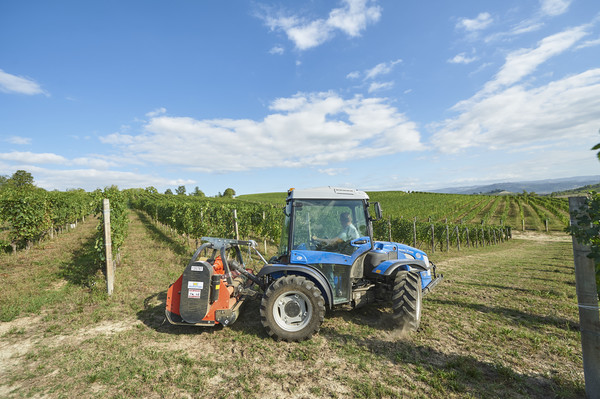
Precision winegrowing, management costs
Precision viticulture is fundamental to improving Italian viticulture's economic and environmental viability, which is currently undergoing significant expansion. Investing in the latest generation of mechanical equipment is challenging for this type of cultivation, but it quickly pays for itself
In Italy, the vineyard is one of the few cultivations in constant expansion because of the increasing export of Italian wine. This is definitely due to viticulturists and enologists doing excellent vineyard management and winemaking. On the other hand, to stay at these levels, winemakers must accept the challenges of the world around us: environmental, economic, and social sustainability, the increase of organic farms, the progressive decrease of the use of phytosanitary products, the growth of biodiversity. In order to reach these goals, it is crucial to improve the knowledge about every phase of wine production. A significant contribution is given by precision viticulture.
As far as economic sustainability is concerned, it is undoubtedly necessary to have cost calculation models for machinery and sites consisting of tractors and operating machines. It is also required to be able to compare distinct options, including, for example: manual processing; traditional mechanized processing; processing with small or large machines; adopting agriculture 4.0 machines and comparing them with the same operations offered with contractor rates (Fig. 1).
The main problem in the cost calculation is to estimate future costs, that is, foreseeing future situations, an operation that is always tricky for any technician, even if very trained. Furthermore, it is also difficult to calculate the so-called additional costs or advantages such as crop losses, damages for mechanical pruning, benefits of precision viticulture, improvement of grape quality, etc... These are essential elements not always easy to calculate beforehand. However, it is advisable to include them in the models to have a series of forecasting data that actually leads to choosing one machine over another. We only need to consider weather models: they are becoming more and more uncertain the more the forecast is long term. Nevertheless, they can provide us with a possible evolution of the situation in advance. The same goes for buying a machine equipped with innovative technology such as agriculture 4.0. This technology enables the operator to work faster since the tractor is equipped with satellite guidance and saves diesel fuel by optimizing engine efficiency and using a recovery sprayer that allows savings on the distributed amounts. Fig. 2 shows a simulation of the possible scenarios where we can notice that even the area that can be covered comes into the picture since the other solutions are only convenient on limited areas when compared to an innovative solution. Among the causes that are currently limiting a rapid expansion of precision viticulture, there are the investments that need to be made and the different approaches that wineries have to adopt, even if in this case - to operate on a minimum level of business size - it may be possible to avoid this with higher participation of contractors or consortia. It is worth remembering that in the agricultural census of 2000, the average area planted with vineyards per company was 0.9 ha, then increased to 1.6 ha in the 2010 census, thus rapidly increasing but still small to consider single applications of precision viticulture. As a matter of fact, this kind of technology has high investment costs that, nevertheless, can be absorbed in time by the achieved results. Some applications and simulations carried out by Luigi Sartori (University of Padua) show that implementing precision viticulture could reduce costs by 30%, labor by 57% and diesel fuel by 46%. Indeed, drones, mathematical models, and satellite guidance are not currently within reach of all winemakers.
Then, as mentioned before, additional advantages come into play, such as a deeper knowledge of the vineyards or soils variability, the possibility to improve the quality of crops (proper harvesting times with more performing machinery), a better work ergonomics (automatic driving) enabling more work capacity. All of these advantages cannot always be quantified in advance. However, models enable us to pre-estimate them, at least in part. The picture is further complicated if we introduce the possibility of robots with self-driving electric motors (Fig. 3) remotely operated or drones for index data collection (NDVI; maturity index, production). In this case, the added value is given by the knowledge increase with which they can enhance production and quality or by a decrease in costs through savings of fertilizer, phytosanitary products or other. Increased knowledge/hectare is another parameter that is not currently well measurable but is required when accessing precision viticulture. Indeed, the data collection problem is related to the possibility of their synthesis and translation into operational parameters for the machinery, such as - for example - the quantity of products distributed or harvested, the proper time needed to perform the operations.
However, the future challenge goes through precision viticulture and the increase of knowledge/hectare to meet the European targets on reducing phytosanitary products, the growth of biodiversity and the increase of organic production. However, it is also necessary to maintain the current leadership in wine exports and in the machinery for the viticulture sector.








